
National Game Parks & Reserves




Ngorongoro Crater "The Eighth Wonder of the World"
Ngorongoro Crater is widely considered to be one of the natural wonders of the world. 12 miles wide, 2000 feet deep, and covering an area of 102 square miles, it is the largest intact volcanic crater on earth and home to a spectacular concentration of wildlife. The crater hosts an estimated 30, 000 animals on its floor, including large herds of buffalo and wildebeest, eland, hartebeest, elephant, hippo, lions, and the endangered black rhino. Millions of years ago, Ngorongoro was an active volcano with a cone that some speculate was as high as Mt. Kilimanjaro. The volcano eventually became extinct and its cone collapsed and sunk, forming an enormous crater.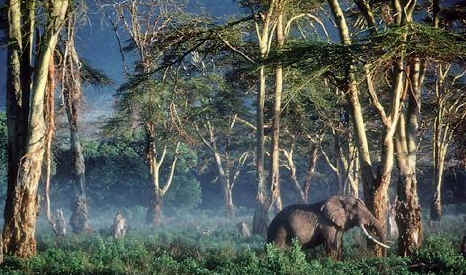 The surrounding area was then slowly enveloped by tropical vegetation and colonized by various species of animals.
The surrounding area was then slowly enveloped by tropical vegetation and colonized by various species of animals.Today, mountain forests, lush vegetation, and fresh springs surround the rim of the crater's towering walls, which top out at an elevation of 7500 feet. With its stunning natural beauty and the tranquility of its surroundings, Ngorongoro is frequently referred to as "Africa's Garden of Eden".
Ngorongoro Crater is just one part of the 8300 sq. kilometer area called the Ngorongoro Conservation Area (NCA). Also contained within the NCA's boundaries is the geologically important and historically controversial Olduvai Gorge, where Louis and Mary Leakey discovered numerous types of the fossil remains of early man.
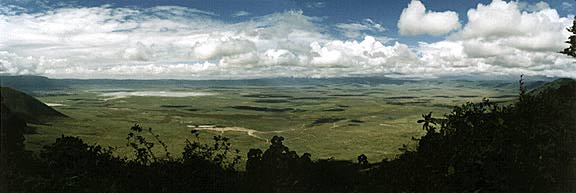

Serengeti National Park "The Endless Plains"
"The World as it was in the Beginning"In the Maasai language, Serengeti means "endless plain", a fitting name for this 14, 763 sq. kilometer expanse of grasslands and forests. Nearly as large as the state of Connecticut, Serengeti National Park is the largest in Tanzania and one of the largest wildlife sanctuaries in the world. The park lies in a high plateau between the Ngorongoro highlands and the Kenyan border and extends nearly all the way to Lake Victoria in the west. The landscape of the park, with its low vegetation and vast seas of open plain, is ideal for game viewing.
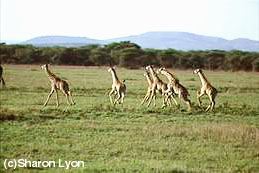 The Serengeti is famed for its annual migrations of wildebeest, zebras, and gazelles. As these massive Herds of herbivores search for new grazing ground, they are tracked and hunted by an impressive array of carnivorous predators such as lions, leopards, cheetahs, and hyenas. The vast plains and woodlands are also inhabited by buffalo, elephant, giraffe, hippo, antelope, ostrich, jackal, baboon, and dik-dik. Bird life in the Serengeti is surprisingly abundant with nearly 500 species of birds having been recorded in the park.
The park was established in 1951to protect its many species and ensure that it will remain a nearly perfect example of, as the sign at the entrance states, "the world as it was in the beginning."
The Serengeti is famed for its annual migrations of wildebeest, zebras, and gazelles. As these massive Herds of herbivores search for new grazing ground, they are tracked and hunted by an impressive array of carnivorous predators such as lions, leopards, cheetahs, and hyenas. The vast plains and woodlands are also inhabited by buffalo, elephant, giraffe, hippo, antelope, ostrich, jackal, baboon, and dik-dik. Bird life in the Serengeti is surprisingly abundant with nearly 500 species of birds having been recorded in the park.
The park was established in 1951to protect its many species and ensure that it will remain a nearly perfect example of, as the sign at the entrance states, "the world as it was in the beginning."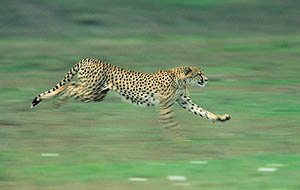


Lake Manyara National Park "Paradise of Wildlife"
Lake Manyara, nestling at the foot of the Great Rift Valley escarpment, is a 125 sq. mile park of which two-thirds is covered by water. The name derives from "emanyara", the Maasai word for prickly euphorbia thorns.The lake is believed to have been formed 2 or 3 million years ago when the Rift Valley cleaved into existence and the streams began to pour over the escarpment, collecting in the natural depression where the lake is found today. There is a high soda content in the lake, even though it is formed from fresh water run-off, which attracts large flocks of flamingos that can form a pink mantle over the lake when viewed from far away.
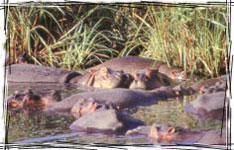 Elsewhere in the park there is a surprising diversity of habitats from open grasslands to hot water springs, riverine forest and swamps to rocky outcrops, each supporting a fantastic array of wildlife and a magnificent birdlife numbering over 400 species. In addition to flamingos, the park is known for its large and boisterous hippo population, populous groups of baboons and several herds of elephant, whose tempers can be a little short as a result of the years of poaching that decimated their number. Another phenomenon distinct to Manyara is the occasional spotting of lions on acacia trees. Suggestions for this behavior include escaping the land heat by catching the air breeze, avoiding the flies or, more likely, to escape the disturbance from the elephant and buffalo herds.
Elsewhere in the park there is a surprising diversity of habitats from open grasslands to hot water springs, riverine forest and swamps to rocky outcrops, each supporting a fantastic array of wildlife and a magnificent birdlife numbering over 400 species. In addition to flamingos, the park is known for its large and boisterous hippo population, populous groups of baboons and several herds of elephant, whose tempers can be a little short as a result of the years of poaching that decimated their number. Another phenomenon distinct to Manyara is the occasional spotting of lions on acacia trees. Suggestions for this behavior include escaping the land heat by catching the air breeze, avoiding the flies or, more likely, to escape the disturbance from the elephant and buffalo herds. Lake Manyara National Park is a small and verdant oasis of life in the confines of the East African Rift Valley.
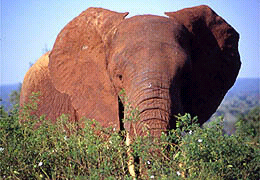
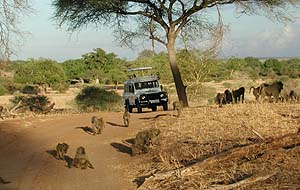

Selous National Park "Largest Game Reserve"
Covering 55,000 square kilometers (5% of Tanzania's total land area), the Selous Game Reserve is as large as the country of Denmark. It is the largest game reserve in all of Africa and one of the largest areas set aside for wildlife preservation anywhere in the world. Remote, mysterious, and relatively unpopulated, the park appeals most to those who seek a sense of isolation, exploration, and discovery. More than half of Tanzania's elephants roam these plains, along with large populations of buffalo, lion, kudu, wildebeest, zebra, and the occasional rhino. An abundant variety of bird life can be found in the Selous, as well as over 1700 species of plants.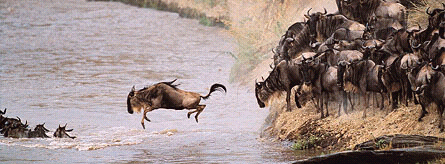
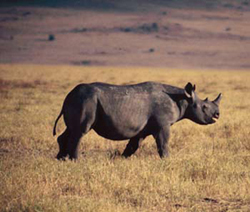

Tarangire National Park "Baobab Land"
Tarangire National Park is one of the finest parks in Tanzania. Located in the Rift Valley, not far from the eastern shore of Lake Manyara, Tarangire covers approximately 2600 square kilometers and contains nine different vegetation zones, each supporting distinct types of wildlife.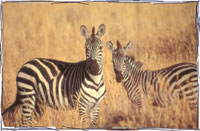 The expansive landscape of Tarangire is panoramic and soothing as the wooded savannas stretch far and wide in every direction. The gently rolling hills are punctuated with majestic Baobab trees, alternating with open acacia woodland, rivers, and stands of palm trees.
The expansive landscape of Tarangire is panoramic and soothing as the wooded savannas stretch far and wide in every direction. The gently rolling hills are punctuated with majestic Baobab trees, alternating with open acacia woodland, rivers, and stands of palm trees.In the dry season (Aug-Oct), when many of the migratory wildlife species return to the permanent waters of the Tarangire River, the park boasts nearly as high a concentration of animal life as Ngorongoro Crater. Large herds of elephants, zebras, wildebeests, eland and oryx congregate here until the wet season allows them to migrate to lush new grazing land.
The river and its surrounding watering holes also attract numerous species of birds to the area. Over 300 species of birds have been recorded in the park, including green wood hoopoes, green and yellow parrots, Fischer's and yellow-collared lovebirds, as well as doves, mousebirds, cuckoos, swifts, and swallows.
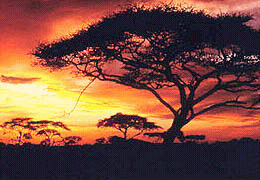
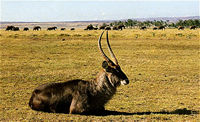

Mikumi National Park "Garden of Heaven"
Located astride the main Dar to Mbeya highway, to the north of Selous Game Reserve and only 283 km from Dar-es-Salaam, the park is an important educational centre for students of ecology and conservation, having been established to protect the environment and resident animals. The Mikumi flood plain is the main feature of the park along with the bordering mountain ranges. It has a landing strip and is home to, among others, the buffalo, zebra, giraffe, lion, wild dogs, python, monitor lizard, hartebeest, wildebeest, elephant (these elephants are grazers and do not damage trees), hippo, impala, warthog, eland and antelope. Birds include the hammerkop, saddle-bill stork, and the malachite kingfisher. The vegetation is made up of woodland, grassland and swamp. There are two water holes, Mkata and Chamgore.
The Mikumi flood plain is the main feature of the park along with the bordering mountain ranges. It has a landing strip and is home to, among others, the buffalo, zebra, giraffe, lion, wild dogs, python, monitor lizard, hartebeest, wildebeest, elephant (these elephants are grazers and do not damage trees), hippo, impala, warthog, eland and antelope. Birds include the hammerkop, saddle-bill stork, and the malachite kingfisher. The vegetation is made up of woodland, grassland and swamp. There are two water holes, Mkata and Chamgore.The park is popular as a weekend outing for Dar residents. Both budget and luxury accommodation is available and include a tented camp, a luxury lodge and designated camp sites.
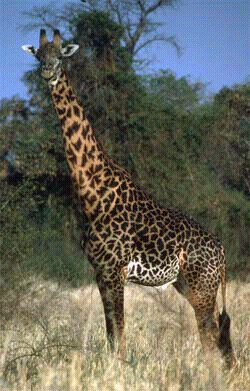
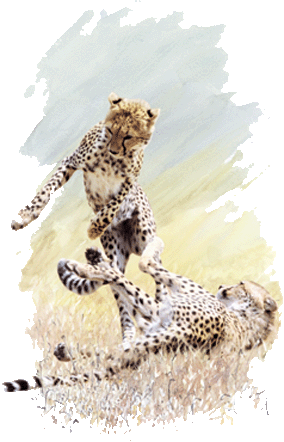
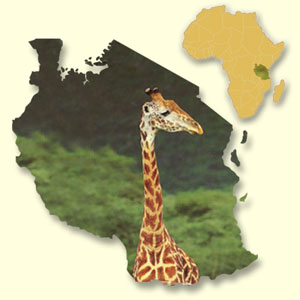
 This great country can be explored by land in comfortable 4x4 cars such as Land Rovers or Land Cruisers
or by flying into an area and taking safaris from there.
Safaris to may be by vehicle, on foot, on certain reasons on horseback, or even from a balloon. Time on safari can easily be complemented by time on a deserted beach or island before the African Dream comes to an end.
This great country can be explored by land in comfortable 4x4 cars such as Land Rovers or Land Cruisers
or by flying into an area and taking safaris from there.
Safaris to may be by vehicle, on foot, on certain reasons on horseback, or even from a balloon. Time on safari can easily be complemented by time on a deserted beach or island before the African Dream comes to an end.
| Copyright � 2002 Tanzania.com All rights reserved.
Enjoy your visit here General Information Tanzania Profile National Parks & Reserves Mt.Kilimanjaro Lake Victoria Zanzibar Slide Show Web Master |
